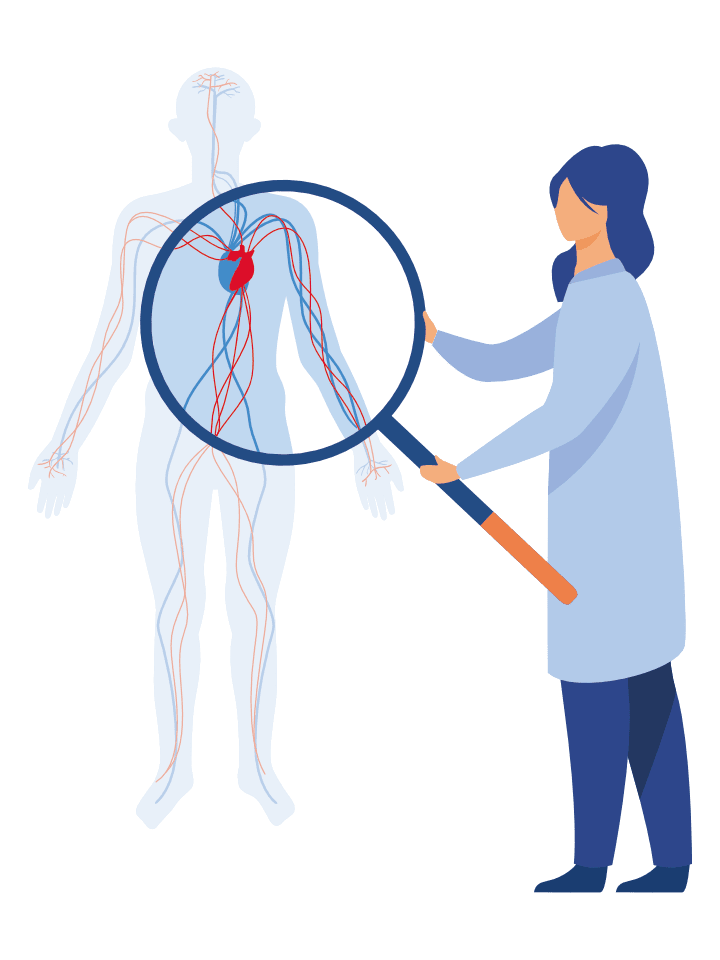Special diagnostics
A successful therapy is preceded by careful diagnostics.
ABI measurement
The Ankle Brachial Index (ABI) has the greatest predictive power for myocardial infarction, stroke and mortality. Compared with the angiogram as the gold standard, an ABI value below 0.9 indicates a circulatory disorder with a sensitivity of up to 95% and, conversely, excludes the disease with almost 100% specificity in healthy individuals.
For the examination, blood pressure cuffs are placed on both arms and both legs and the blood pressure is then determined simultaneously on all four extremities. In this way, circulatory disorders in one of the four extremities can be detected with a high degree of probability. As many as 1 in 5 people over the age of 65 show signs of a circulatory disorder, which also means an increased risk of stroke and heart attack.
With increasing age and the accumulation of risk factors such as hypertension, diabetes mellitus, dyslipidemia and nicotine consumption, the blood vessels stiffen and their elasticity decreases. The increase in vascular stiffness has a major impact on cardiovascular function and therefore has important prognostic significance and therapeutic consequences. Among other things, it is responsible for the increase in blood pressure and promotes arteriosclerosis.
In our practice we have a corresponding device and can therefore offer our patients this useful preventive service throughout. However, the statutory health insurance companies do not cover the costs in most cases. We will be happy to inform you accordingly.
Pulse wave analysis – Do you know your vascular age?
In young people, blood vessels are still very elastic. With increasing age, however, the vessels become stiffer as elastic fibers (elastin) are replaced by the tighter collagen, which leads to calcification of the blood vessels: Vascular age increases. This natural process is accelerated by additional risks – nicotine, high blood pressure, diabetes, elevated cholesterol levels.
Pulse wave analysis is used for early detection of hypertension and vascular calcification and measures pulse wave velocity as an indicator of vascular stiffness. The increase in vascular stiffness significantly influences cardiovascular function and therefore has important prognostic significance and therapeutic consequences. Among other things, it is responsible for the increase in blood pressure.
More
